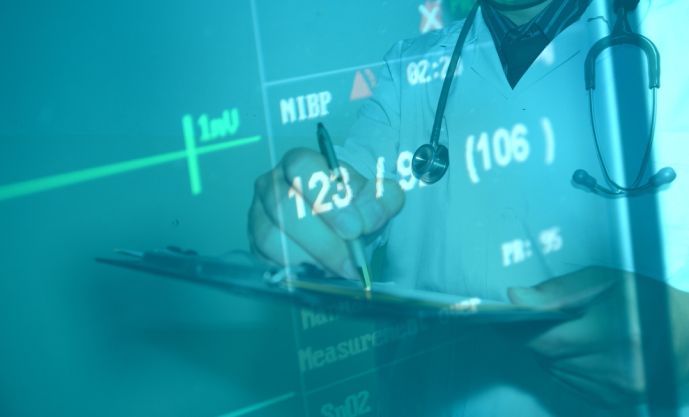Patient Data Focused Technologies — Boon for the Healthcare Industry?
M3 India Newsdesk Apr 26, 2017
With the abundant health monitoring technologies available today, it is quite evident that consumer interest in healthcare is profound. But what does that mean for the healthcare industry?

Patient-generated health data (PGHD) — the information collected from/by patients outside clinical environment offers enormous opportunities as it not only improves the quality of care but also reduces the healthcare costs as well.
PGHD such as symptoms, vital signs, side effects health history, treatment history, biometric data lifestyle choices, etc. have been collected at both healthcare centres as well as via certain devices for remote monitoring. The rise in availability of these PGHD technologies like wearables, mobile apps, etc. have enabled independent and seamless capturing and sharing of patient data with healthcare professionals and researchers, no matter where they are located. Patients also have access to submit their health data electronically. Per an online report, 60% of American adults track their weight, diet, or exercise routine and about 33% of adults keep track of their health indicators or symptoms, like blood pressure, blood sugar, headaches, or sleep patterns, digitally.
The Evolution
According to the IMS Institute’s report (September 2015), there are over 165,000 mobile health apps available for download from the U.S. Apple iTunes store and the Google Play Store. It is reported that about two-thirds of them are focused on general wellness such as fitness, diet, and stress.
PGHD is nothing new. For a long time now, patients have kept paper logs of their health data like their weight, symptoms, blood sugar readings, and side effects. They have also brought them during their visits to doctors to assist them in discussing healthcare options. But now, with the advent of technologies like networking, cloud-based platforms, smartphone apps, and other connected devices, data collection has been made simpler. Also, Cloud computing has simplified the process of sharing large data sets at a reduced cost.
According to a statement made by Win Burke, the CEO of iGetBetter, a mobile digital health solution company to a newspaper, “The idea is to avoid unnecessary office visits and to prevent admissions, readmissions, and repeat visits to the ER.” He says, if patients keep coming back, health care facilities would have to spend more money to treat them.”
New possibilities for the use of wearables have been made possible via the recent advances in telecommunications, microelectronics, sensor manufacturing and data analysis techniques which help us achieve a broad range of health outcomes. The size of sensors and front-end electronics in the past had made it impossible to use them as wearables to gather physiological and movement data. But now, with all the small circuits, microcontroller functions, front-end amplification and wireless data transmission, these sensors could be very handy and enable deployment in digital health monitoring units.
Advantages of Patient Data Centered Technologies:
Improves access: These technologies enable patients to record and share PGHD to manage their health and participate in their health care in a better way. The remote capturing and/sharing of PGHD also reduces time and effort and also improves efficiency.
Improved Care: These devices have transformed the level of care with a plethora of patient history and data. For healthcare professionals such as clinicians and researchers, PGHD helps them obtain a holistic view of their patient’s health over a period.
Cuts Costs: These technologies not only let the patients adhere to a treatment plan, but this timely intervention also reduces care costs. Also, Insurers offer free wearables and cash incentives to subscribers who meet certain health goals.
Improves Patient Engagement: Patients would feel more connected to their healthcare team, and it would enhance their confidence in planning their activities towards their healthcare. Moreover, The patient-clinician relationships would be strengthened, and they would together engage in decision-making to ensure best outcomes.
Patient data centred technologies have indeed brought about positive changes in the health IT sector and we should look forward to more developments in the future. Next generation wearables are likely to improve and enable real-time and continuous monitoring of activities, and the increase in data could impact in disease understanding and care delivery. However, there might be a few challenges w.r.t data validity, usability, programmatic integration, clinical integration, and user data privacies. Individual policies and a framework of standards should be created to address these and maintain the integrity, privacy & security of PGHD.
-
Exclusive Write-ups & Webinars by KOLs
-
Daily Quiz by specialty
-
Paid Market Research Surveys
-
Case discussions, News & Journals' summaries